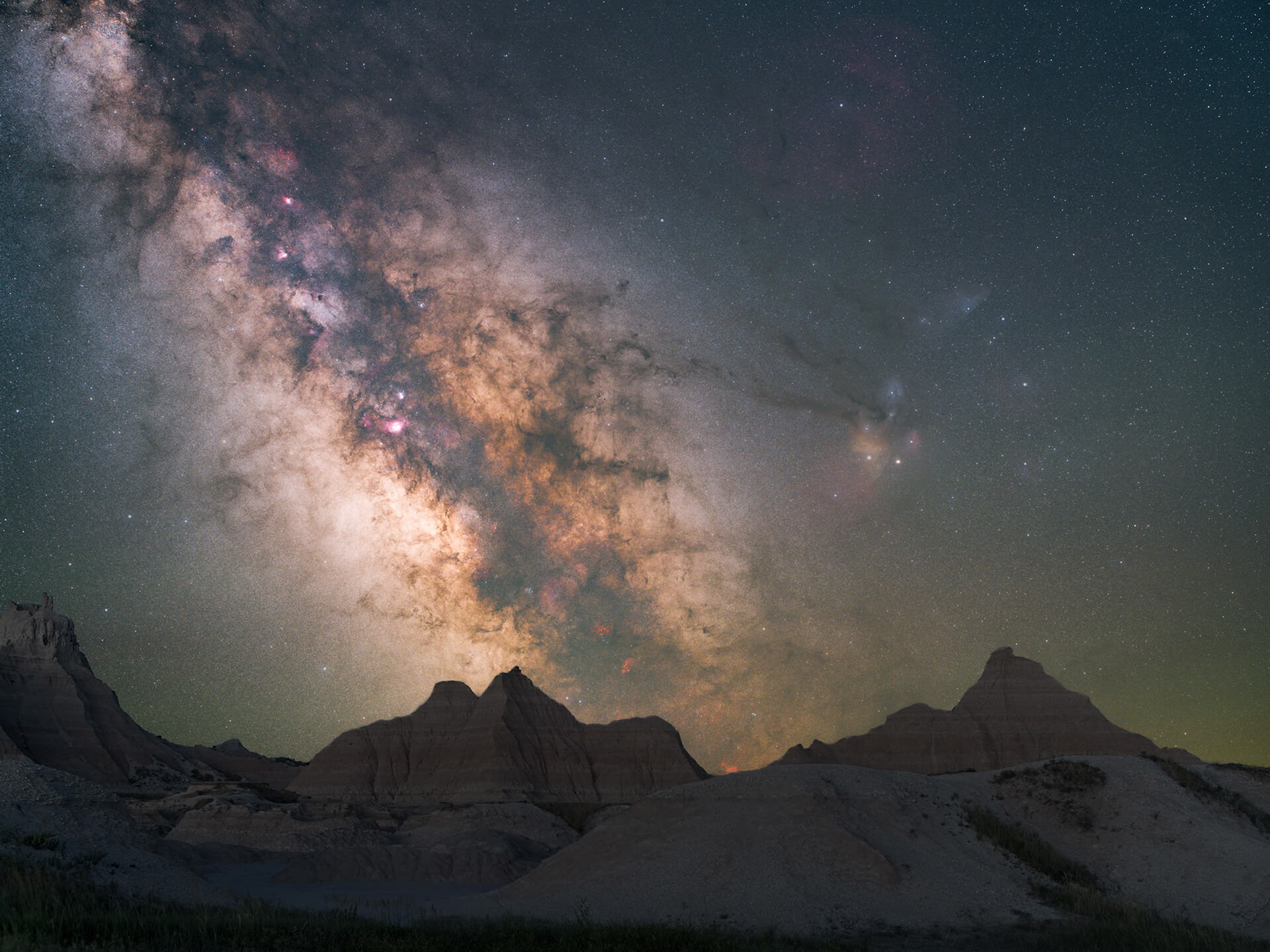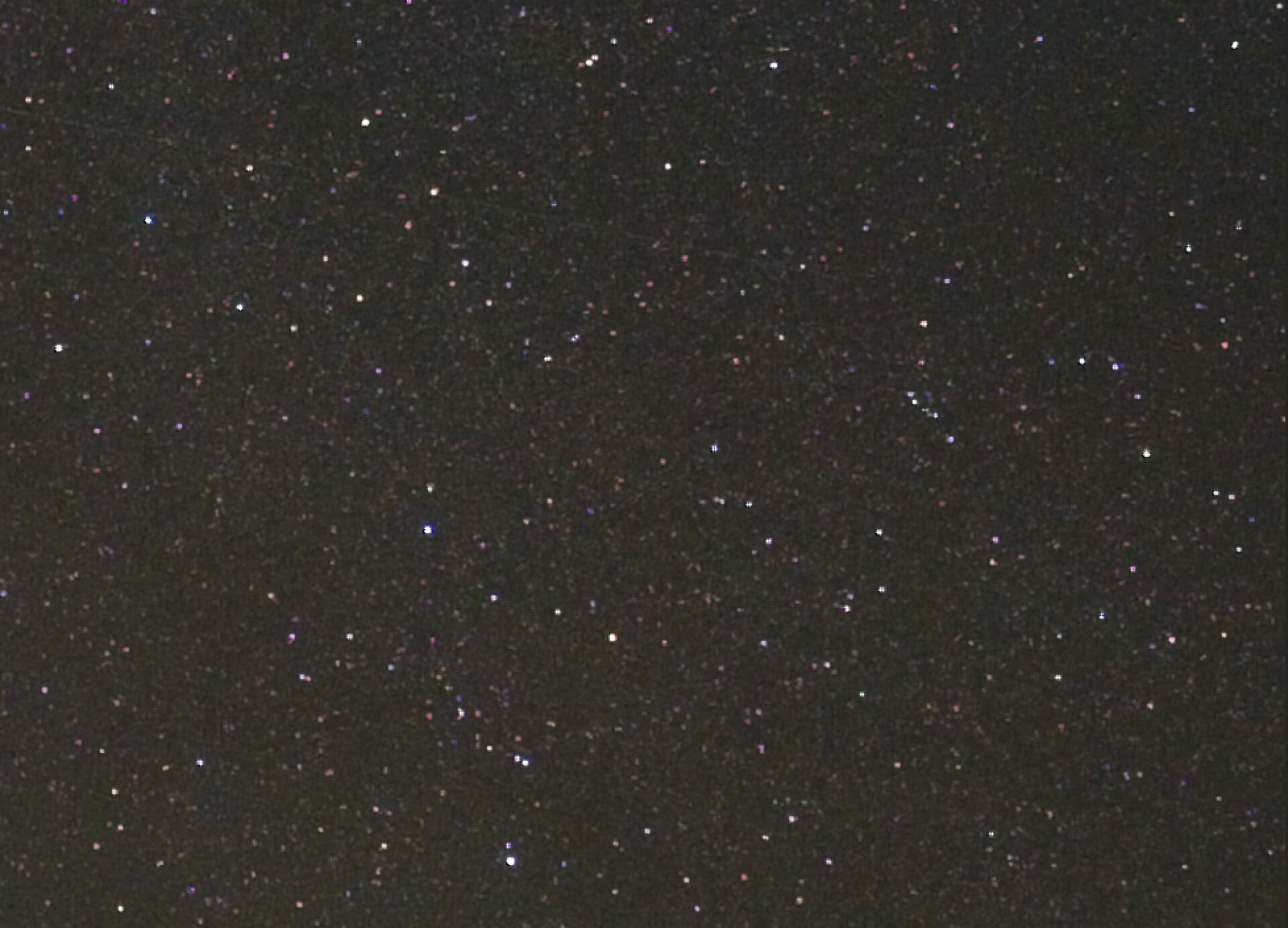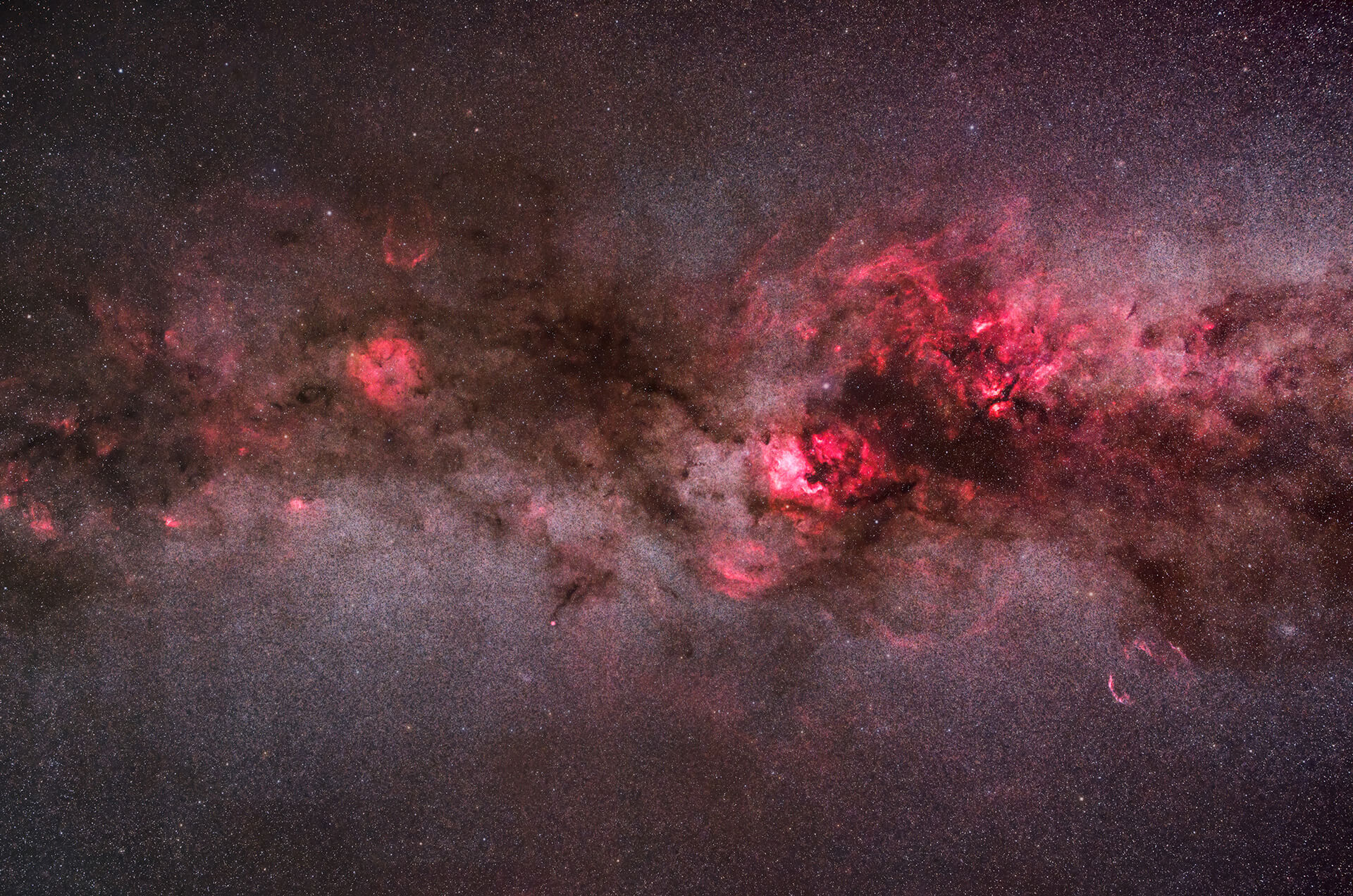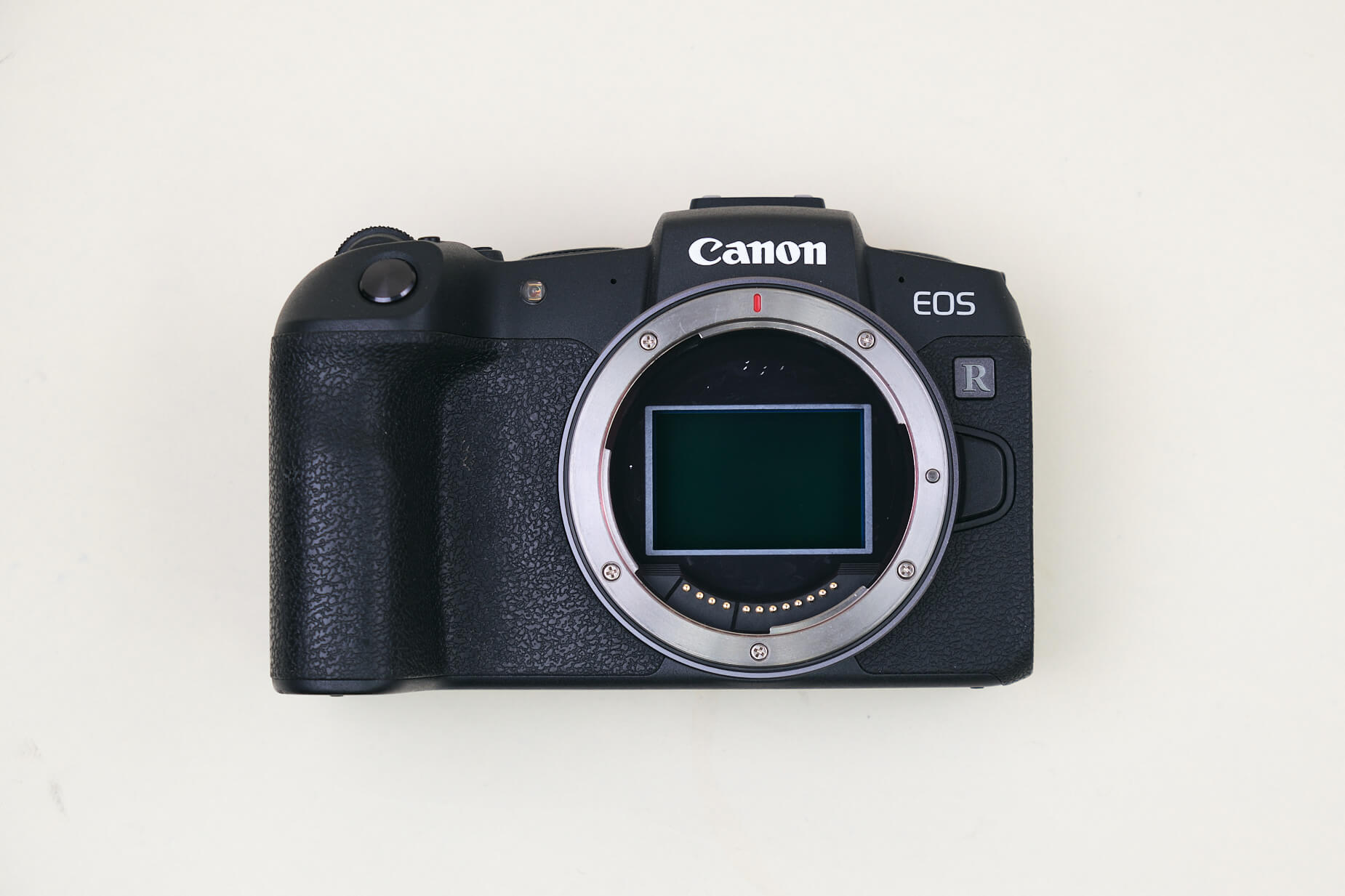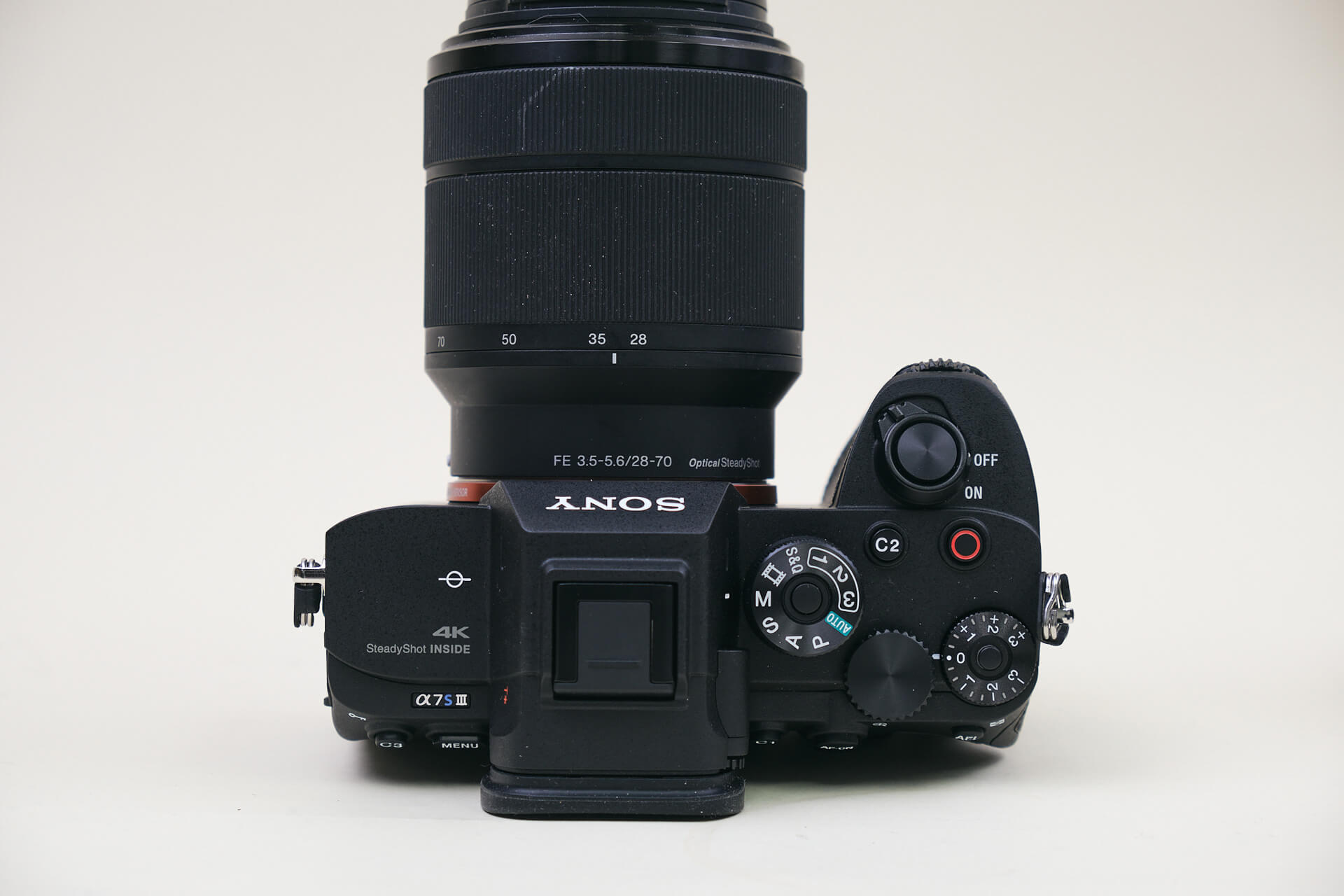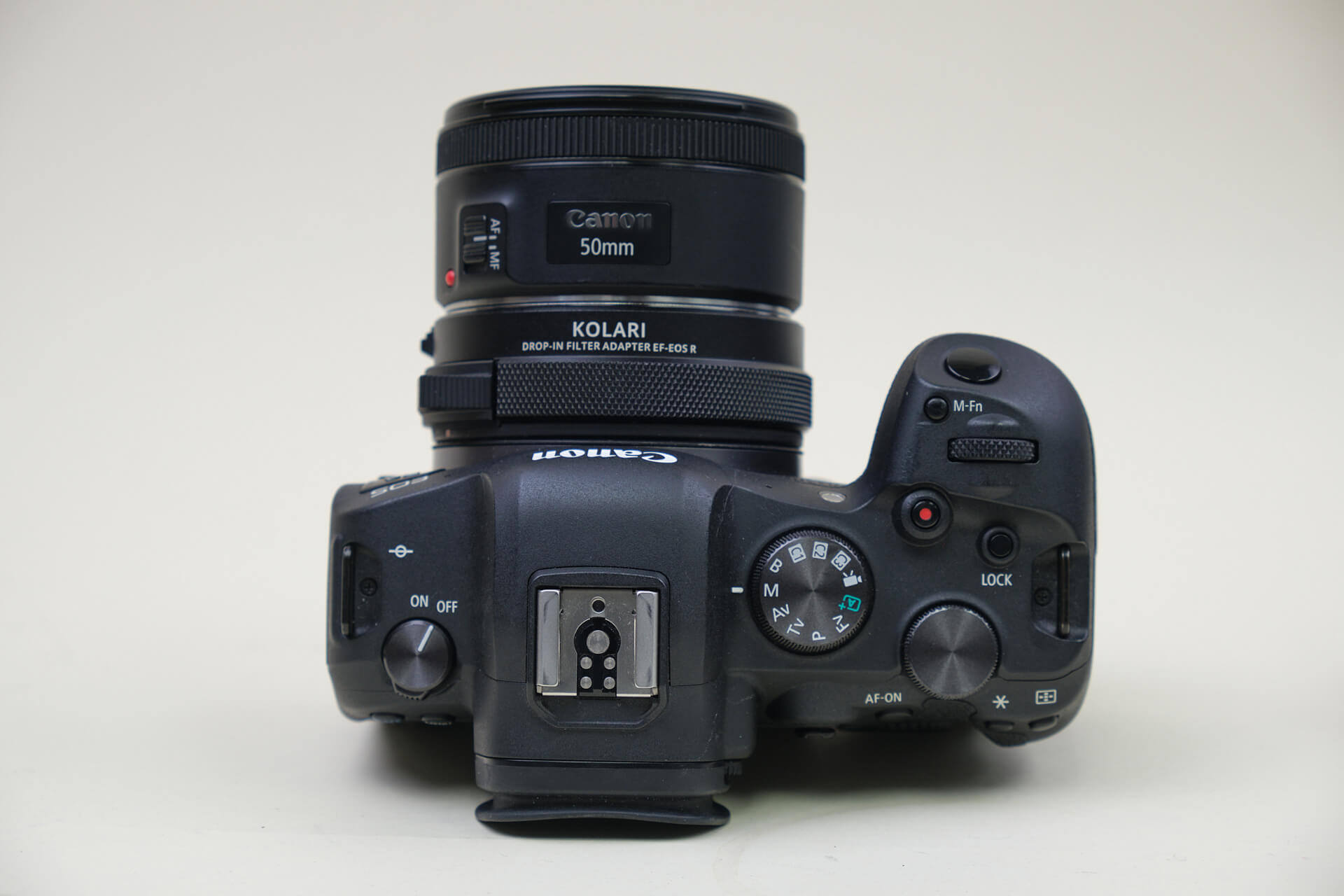Today, all the major camera manufacturers make excellent cameras. For general photography, choosing a brand is more a matter of personal preference, so it is hard to go wrong. Things get more complicated for the demanding application of astrophotography, and there are real considerations to be made when choosing between brands. For basic landscape astrophotography on a tripod, some of these things will not apply and any brand will perform fine. If you are interested in a camera to grow with and pursue more advanced astro techniques and modification, then there are some things you should consider.
Digital Camera Sensors
Digital sensor technology has come a long way. All the latest camera sensors have little to no “amp glow,” low read noise, and great thermal noise characteristics—things that used to plague earlier digital camera sensors. Amp glow refers to sensors having uneven hotspots that can appear in dark frames of long exposures.
It is important to know that Sony does not just make digital cameras but also manufactures sensors for many other camera brands. Their line of Sony IMX sensors is used in the latest Nikon, Fujifilm, Leica, and other digital cameras. These sensors all have excellent characteristics for astrophotography. They feature high quantum efficiency (the percentage of photons that hit the sensor and are converted to signal) and ISO invariance.
ISO invariance is a beneficial characteristic for a camera and astrophotography—it means that shooting at a base ISO and raising exposure in post is no different than if you had shot it at a higher ISO to begin with. However, you do gain more flexibility and better dynamic range by shooting at a base ISO. Most of these Sony sensors feature two bases—a lower base ISO and a second base ISO that unlocks a high gain and low read noise mode. For astrophotography, I suggest just shooting at the second base ISO on any camera with a Sony sensor.
Canon still manufactures their own sensors that perform well, but most are not ISO-invariant, so you need to be more mindful of ISO when shooting astrophotography. While the sensors in the latest Sony A7 series, Nikon Z, and some Fujifilm cameras are similar, there are big differences regarding in-camera software implementation and how that affects your RAW files and data for astrophotography.
Spatial Filtering
Perhaps one of the most controversial topics on the internet around cameras for astrophotography is the Sony “star eater” issue. Star eater is a name given to the phenomenon of Sony mirrorless cameras seeming to destroy stars. Some people claim it makes Sony cameras completely unusable for astrophotography, while some Sony fans claim it is non-existent. The phenomenon comes from Sony’s internal noise-filtering algorithms that filter noise in the RAW files and cannot be turned off in camera.
The earliest algorithms were extremely aggressive and mistook the small pinpoints of light from stars as noise and tried to correct it. This creates many artifacts of destroyed stars and what I would describe as a confetti-like noise in the background. It can also create small holes in star cores or cause star color shifts.
There are two iterations of the “star eater.” The first is on the earliest version of the original A7 series. This only kicked in on bulb mode; timed shutter speeds of 30 seconds and below were unaffected. In bulb mode, the effect is extreme, and I would consider it almost unusable. The good news is, you can shoot up to 30s with clean images and just stack more of them in post. I have a Sony a6500 with a V1 star eater, so this is how I use it.
At some point, Sony switched the algorithm and moved to what I will call the V2 star eater. The effect is toned down but still present and may be more difficult to notice in some circumstances. The bad news is that it cannot be turned off and now affects all shutter speeds, not just bulb mode. This is in all the latest Sony cameras from my A7R IV to the new A7 IV and A7R V.
I was once in the group that said the issue was fixed and never noticed a problem until, one day, I saw it on some tracked images. Now I see it everywhere. If you are just shooting on a tripod without a star tracker, you are likely never to notice it since the stars streak to small lines and are less likely to be “eaten” by the algorithm. The issue becomes more pronounced on tracked shots where stars are pinpoints. It can be hard to notice if you don’t know what to look for, but it introduces another type of irregular background noise.
While Sony is the most extreme case of this issue, other brands apply some level of spatial filtering in camera that can affect stars. I have seen complaints from some Fujifilm users about this issue, particularly on the GFX 50R, but it is unclear which other models are affected. Data suggests that Nikon also applies some level of filtering in their cameras. Canon uses no spatial filtering that could hurt astronomical images, and the RAW files are truly RAW, which is excellent for astrophotography.
Calibration
The next important consideration is how cameras handle calibration frames for astronomical images. More advanced astro techniques involve taking sets of dark, flat, and bias frames and applying them to the “light” frames to correct them before processing. This allows for correcting hot pixels, dust spots, and vignetting before stacking images for further processing.
Some cameras can exhibit strange behavior and have difficulty applying calibration frames properly. There are reports of Nikon Z users having difficulty with concentric banding when correcting with flat frames under some circumstances. Sony cameras handle calibration frames well, from my experience. Canon R series users report some issues with noise at lower ISOs which can be mitigated by shooting everything slightly higher.
H-alpha Response and Modification
One of the most abundant substances in the universe is hydrogen. It creates the characteristic vibrant red colors of emission nebulae in night sky images. H-alpha is light emitted in the deep red spectrum and has a wavelength of 656nm. Stock camera low pass filters attenuate this wavelength to various degrees—as much as 85% or more. This is where astrophotography cameras and mods are desirable—they switch the original low pass filter to one that allows nearly all the h-alpha wavelength to pass through.
The level at which stock low pass filters attenuate this signal varies. Sony cameras have a particularly aggressive stock filter that cuts off most deep red signals. With a stock camera, you will not be able to capture much emission nebulae, and even for wide Milkyway shots, the bits of red nebula in the core, like the Lagoon and Eagle nebula, will shift to a kind of purple color. If you shoot the Orion nebula, the color will also develop an unnatural purple and blue shift.
In my experience, Fujifilm cameras have a better stock deep-red response, and colors look much more natural, but they still benefit from modification. Canon and Nikon cameras are somewhere in between and also benefit from an astro mod. Check out the spectral response of each camera brand here. At one point, both Canon and Nikon made astro-specific cameras with a filter optimized for astrophotography. This was basically an astro mod from the factory, but neither manufacturer currently offers a model in production. The last cameras offered were the Canon EOS Ra and the Nikon D810a. Getting a camera modified for astrophotography is straightforward, though there are similar considerations as for infrared conversions and looking for cameras that do not have internal IR LEDs. This applies to some Sony cameras, but the latest are suitable for conversion.
Wide-Angle Lenses for Sony
One additional concern regarding modifying Sony full frame mirrorless cameras, in particular, comes from the design choices Sony made in these cameras early on. Sony originally designed the E-mount for an APS-C-sized sensor and only later added full frame options. They tasked their engineers to fit the full frame sensor in the existing E-mount to maximize lens compatibility, and they were just barely able to squeeze the sensor behind the mount. The fit was so tight that the sensor’s corners reached beyond the lens mount opening. You can see a stark difference to the RF-mount, which was designed for full frame from the start.
As a result of this design constraint, Sony FE lenses must first narrow the light through a smaller mount and then project the image out at a wide angle to resolve over the whole sensor. You can see this narrowing in many of the FE lenses, and the result is that Sony lenses have a wide incident angle of the light leaving the lens. Unfortunately, this pairs poorly with Sony’s design choice to use an exceptionally thick UV/IR cut filter over their sensor. Thick glass does not play well with wide incident angles of light and causes a field curvature, leaving the corners of the images soft.
Of course, Sony has excellent optical engineers, so when designing their lenses, they can work around these two constraints and optimize the lens to project an inverted field curvature that the sensor glass deflects back to a flat field for sharp images. In the modification world, this presents a challenge, as any changes to the filter thickness throw off this optimization. The problem can’t simply be solved by matching the filter thickness, as the mix of wavelengths changes and the apochromatic corrections are skewed after modification. If you add a clip-in filter to the equation, the sensor glass thickness changes, and the camera can never be optimized for shooting both with or without a clip-in. The overall effect can be slight, but stars are a perfect subject to observe even the slightest differences. Sony lenses are often the most sensitive to sensor modifications. Nikon and Canon lenses handle camera modifications better as they aren’t limited by these same constraints.
Software Control and Final Considerations
For advanced deep sky astrophotography, it is desirable to be able to control the camera with a computer or Raspberry Pi device and dedicated astronomy software. This allows you to hook up a go-to mount, take pictures from your computer or tablet, and have the files loaded to the device. This allows for automation like target slewing, dithering, and precise autofocus routines on stars. If this is a route you want to pursue, then you should consider the driver support available for different cameras.
Canon and Nikon have the best support and work with more devices and software. Sony support has historically been more difficult, but it is possible. I have controlled my A7R IV with N.I.N.A software on a mini-PC. Support for Fujifilm, Panasonic, Pentax, etc., is pretty much non-existent. So, if you go this route, you will be limited to using a manual intervalometer.
For truly advanced astrophotography, there are dedicated cooled astronomy cameras. These are designed for deep sky astrophotography and can only be controlled with a computer and astronomy software. They do not have any of the problems of traditional mirrorless cameras and DSLRs, but they are not as flexible and not well suited for landscape astrophotography.
Astrophotography Considerations for Major Mirrorless Camera Brands
Pros | Cons | |
|---|---|---|
Sony | – Best and latest Sony sensors – Mostly excellent lens selection for astrophotography | – Most severe and problematic spatial filtering issues, aka Star Eater – Very poor stock deep red response – Limited astronomy software support – Issues with wide-angle lenses on full frame cameras |
Nikon | – Excellent Sony sensors – Imperceptible to mild spacial filtering – Excellent astronomy software support | – Potential issues with flat calibration and colored banding – Imperceptible to mild spacial filtering (this can go either way) |
Canon | – Zero spatial filtering/Star Eater – Excellent astronomy software support | – Non truly ISO-invariant sensors are still a step behind Sony IMX sensors (latest R5 sensor gets much closer) |
FujiFilm | – Excellent Sony sensors — the Sony sensors used in the Fuji APS-C line are better than Sony use themselves in their a6xx line – Native lenses available with very good astro performance – Excellent stock deep red response | – Potential spatial filtering/Star Eater issues – No astronomy software support |
In summary, no camera brand is perfect for astrophotography. I have primarily been a Sony shooter since that’s what I started with. The sensor is downright amazing and, once modified, produces great red response. However, star eater is a real issue, and it is frustrating. I have still gotten some great results, and the issue is difficult to notice unless you pixel peep or are printing large. I have also seen excellent results from Nikon, Canon, and Fujifilm users. If I were starting over, I would probably look to Canon for astrophotography. In fact, I plan to pick up a modified EOS R to try out. Fujifilm and Nikon cameras are also tempting for astrophotography, but having no spatial filtering or strange calibration issues is more valuable to me than the absolute best Sony sensors.
